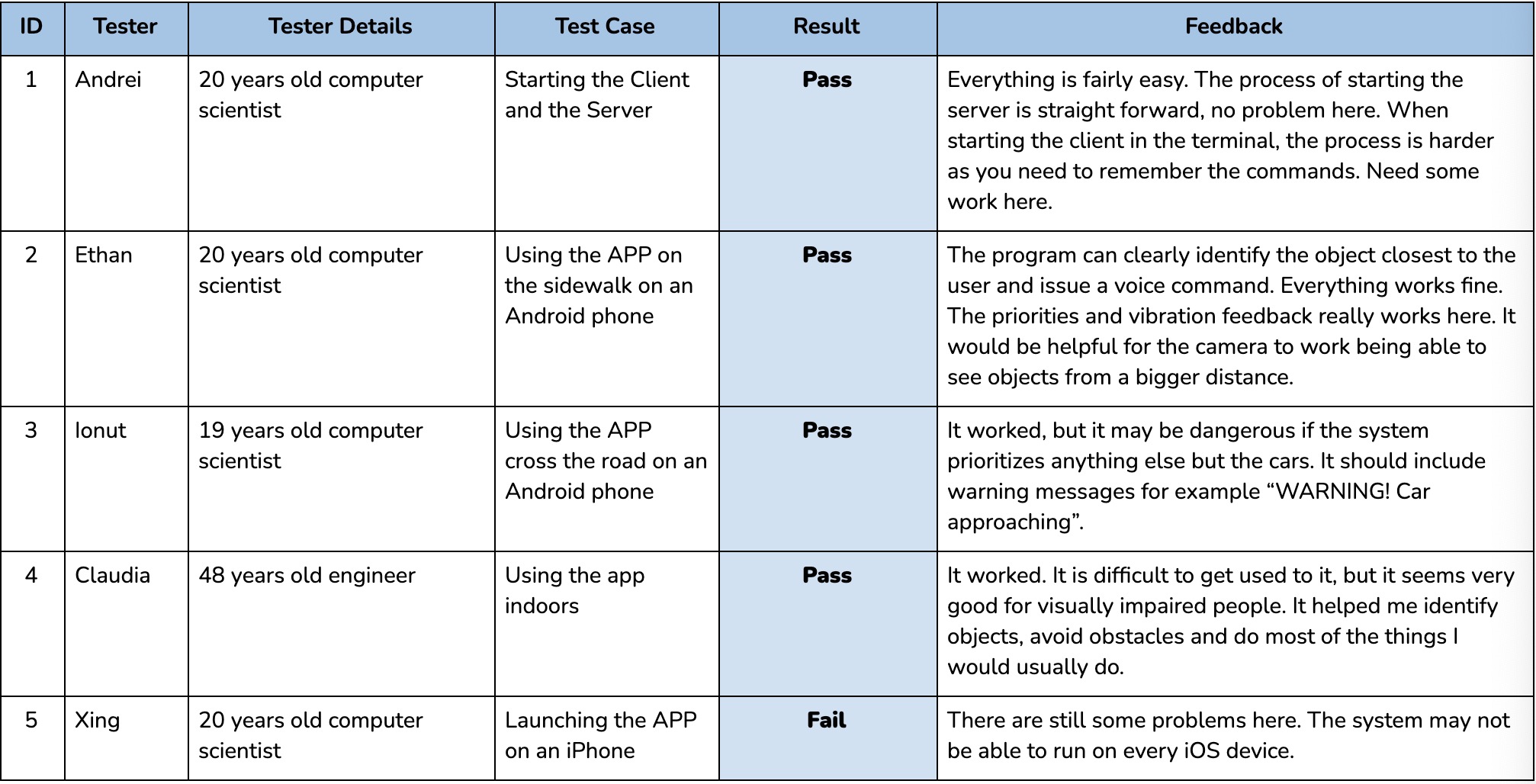
Since our project is meant to be used by a consumer and the product is heavily research-based, unit tests won’t completely meet our test requirements. Instead, what determines the success of the parts of the project is the user experience, thus we mainly apply user tests. These kinds of tests helped us to also do integration tests. Because we don’t know people that are visually impaired, we asked our testers to try to put themselves into a scenario: they are visually impaired and try to move through their house. We asked them to cover their eyes with a piece of material, but we insisted that someone should be there with them the whole time to avoid injuries. Besides us, we asked some friends and some relatives to be our testers. Whenever they found a bug of a small thing that is not alright or that may be improved, we took a look through the code to fix the bug. In this way, we had a Test-driven development of our system, which we think is the best one. Afterwards, we organized a meeting with the clients to discuss the drawbacks and merits in different scenarios to find out the potential effect. Unfortunately, because of the lack of time, we were unable to organize a meeting with some blind people or with people that work with them.
As I mentioned above, some selected users tried our system in different scenarios. After that, we talked to them and asked them a few questions about their experience with our piece of technology. The table below illustrates the feedback from them and the test cases of our user acceptance testing. Vlad and Xing are part of our team, Andrei and Ionut are both Computer Science students in Romania, Ethan is a computer scientist from China and Claudia is the mother of one of our team members.
